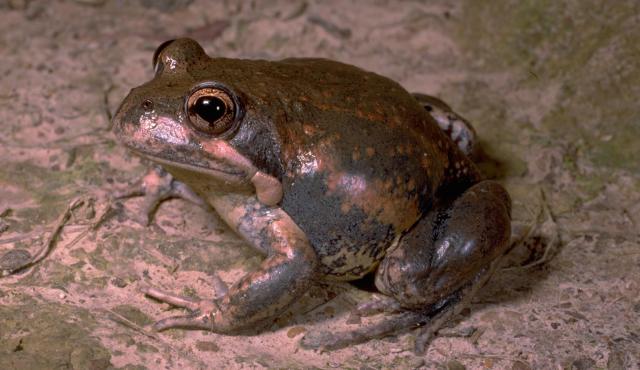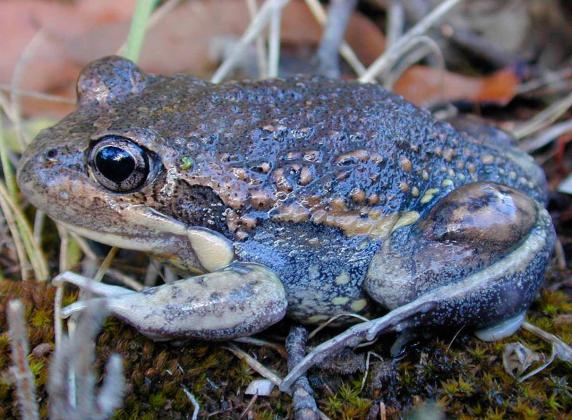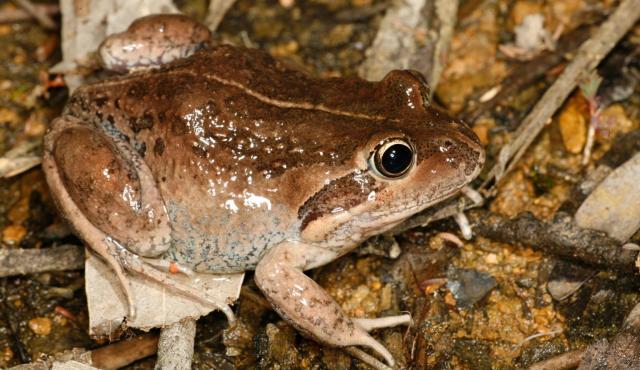A range of teacher professional learning programs will be developed to accompany the Biodiversity of the Western Volcanic Plains online outreach...





Eastern Banjo Frog
Limnodynastes dumerilii
Breeding season: spring to early autumn. Females lay up to 4000 pigmented eggs enclosed in a white frothy floating foam raft hidden amongst aquatic vegetation.
| Details | Description |
| Type | Amphibian |
| Group | Frog - Southern Frog |
| Other Common Names | Pobblebonk |
| Identifying Characteristics | |
| Distinctive Markings | Adults have a large oval tibial gland and a narrow elongate skin gland on the upper jaw. Short and rounded snout and indistinct tympanum. |
| Diet | Carnivore. Adults feed on invertebrates. |
| Habitat | Friable loamy or sandy soils in which to burrow. Often found in dug up gardens. |
| Native Status | Native to Australia |
| Sounds | The identifying call is a short musical banjo-like "plonk" or "bonk". |
| Taxonomy | |
| Phylum | Chordata |
| Class | Amphibia |
| Order | Anura |
| Family | Limnodynastidae |
| Genus | Limnodynastes |
| Species | dumerilii |

Distribution maps indicate current and historic locations where species have been sighted.
Source: Atlas of Living Australia
| Conservation Status | |
| DEPI Advisory List | Not listed |
| FFG Act | Not listed |
| EPBC Act | Not listed |
The conservation status of species is listed within Victoria and Australia.
The Department of Environment and Primary Industry (DEPI) Advisory List consists of non-statutory advisory lists of rare or threatened flora and fauna within Victoria.
The Flora and Fauna Guarantee Act 1988 (FFG Act) lists threatened species in Victoria. Under the Act, an Action Statement is produced for each listed species.
The Environment Protection and Biodiversity Conservation Act 1999 (EPBC Act) is the Australian Government’s key piece of environmental legislation, listing nationally threatened native species and ecological communities.



